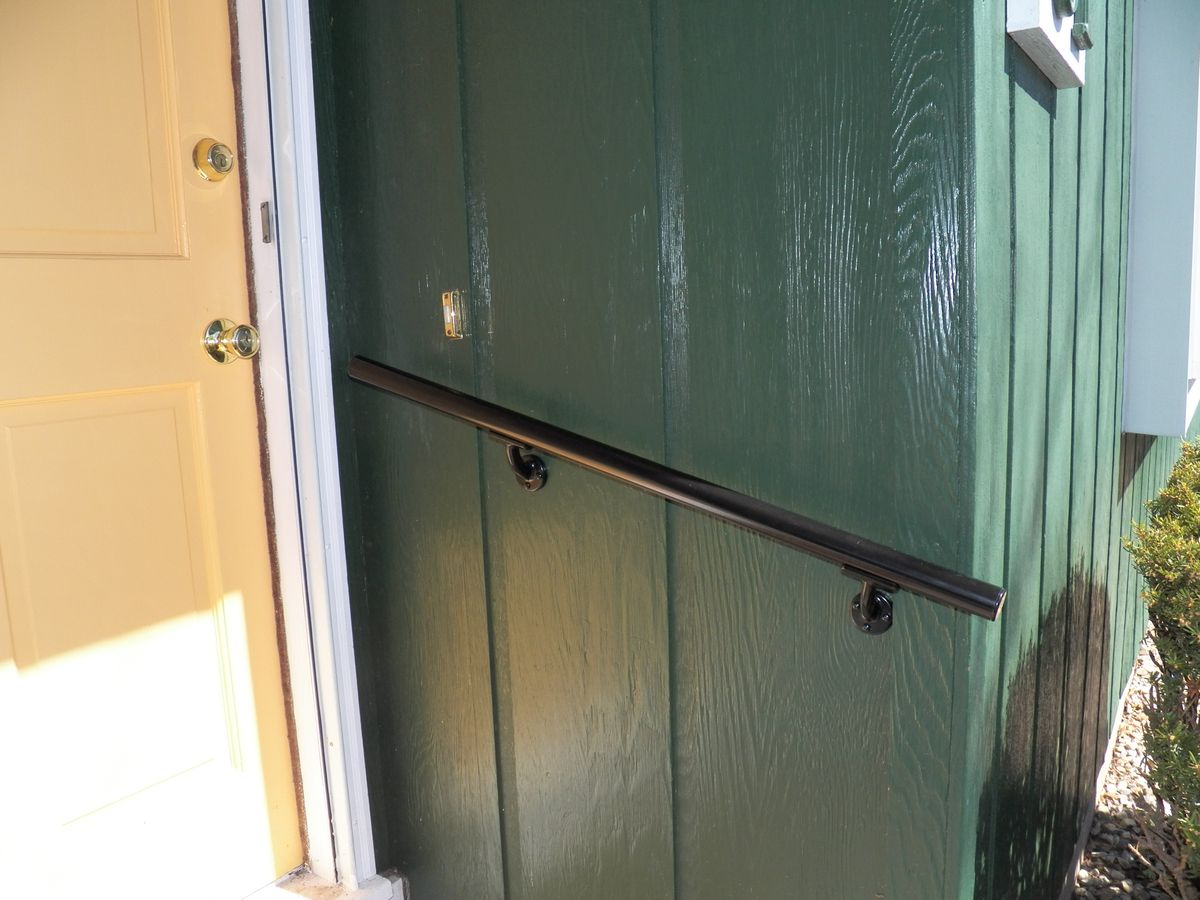AHD Blog
Common Mistakes to Avoid When Installing a Handrail
Installing a new handrail is typically quite straightforward if you’re an experienced handyman working with a high-quality kit, but that doesn’t mean mistakes won’t happen. Overlooking a small detail might lead to a frustrating error. Using the wrong tools might come back to bite you. And sometimes, luck simply isn’t on your side. Whether you’ve measured the height incorrectly, used the wrong materials, or skipped a crucial step, missteps can compromise both the function and appearance of your handrail. So, if you want to avoid costly errors and ensure a sturdy, code-compliant result, scroll down to review some of the most common mistakes to avoid when installing a handrail.

Things to Watch Out For When Installing a Handrail
Choosing the Wrong Height
Believe us: you won’t regret spending a little extra time double- and triple-checking that you decided on the right handrail height and measured it properly. Installing your handrails too high or too low can lead to failed inspections and safety issues — not to mention the fact that if you make an error on this step, you’ll have to start all over if you don’t realize it till the end! Building codes usually require handrails to be 34 to 38 inches high, and this should be measured from the stair tread, which is the horizontal surface where you step when ascending/descending.
Providing Inadequate Support or Poor Anchoring
A handrail should be firmly anchored into studs or masonry, not simply screwed into drywall. Weak anchoring can cause the rail to wobble or, in the worst-case scenario, fall off the wall entirely. Make sure that your chosen handrail kit comes with high-quality wall mounts, and follow the instructions to ensure it’s properly anchored.
Neglecting Code Compliance
Residential and commercial building codes include a number of regulations relating to handrails, including handrail height, spacing, grip size, extensions, and more. Ignoring these rules isn’t just a safety hazard; it could also lead to legal ramifications. You may have to pay a fine and/or reinstall your handrail if you’re found to be non-compliant.
Forgetting to Check the Angle
Your handrail should follow the angle of your stairs or ramp, following a consistent slope for the length of the stairway/ramp. If you place them at an inconsistent angle, they’ll feel awkward, unsafe, and possibly even unusable.
Using Low-Quality Materials
Your handrail can only be durable and long-lasting if you choose top-quality products and materials. If you accidentally use interior-grade hardware for an exterior handrail, for example, it may not be able to withstand the elements. Or, if you choose low-quality supplies that can’t handle the weight of the handrail, they might experience premature wear or a safety failure. Shop carefully.
Creating Sloppy Joint Connections
If the joints and corners are misaligned or poorly executed, they’ll compromise the integrity of the handrail. They will also look unprofessional, and people may find them difficult or uncomfortable to use.
Failing to Extend the Handrail
In many cases, handrails must extend beyond the top or bottom of the stairs. Failing to extend the handrail may violate code and reduce safety. When purchasing your handrail, make sure that you explore applicable building codes and choose one that’s long enough. In addition, double-check the placement to ensure it extends on both sides if necessary.
_____
Installing a handrail is easy if you have the right kit by your side. If you’re looking for a beautiful, long-lasting, and durable aluminum handrail, check out Aluminum Handrail Direct. We offer high-quality, maintenance-free aluminum handrails and accessories, and we would be happy to help you understand more about our options. Plus, our installation guides make installing your handrail a breeze. For more information, call us at 417-409-3179 or contact us online.
